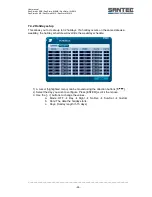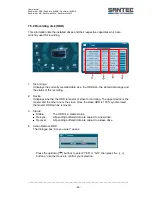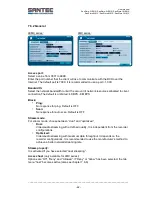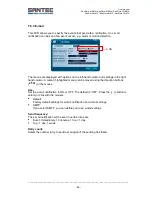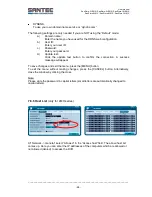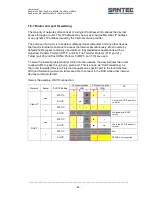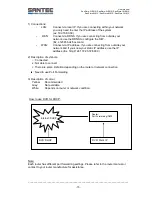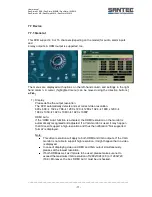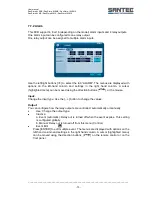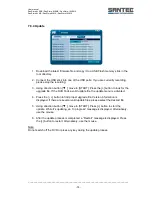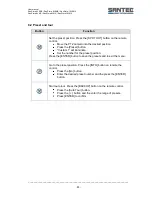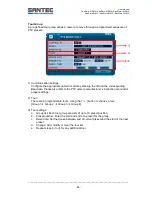
User manual
SanStore-4LEMX / SanStore-8LEMX / SanStore-16LEMX
SanStore-4LMX / SanStore-8LMX / SanStore-16LMX
_____________________________________________________________________________
- 69 -
7.6.7 Router and port forwarding
The majority of networks often consist of a single IP address which shares the Internet
access through a router. This IP address may be any external (public) static IP address
or any dynamic IP address issued by the Internet service provider.
The purpose of a router is to enable multiple personal computers and any other devices
that require Internet connection to access the Internet simultaneously. Most routers by
default enable (open) commonly used ports so that mainstream applications such as
Hypertext Transfer Protocol (HTTP, port 80), File Transfer Protocol (FTP, port 21),
Telnet (port 23) and Post Office Protocol 3 (POP3, port 110) are used.
To solve the firewall problem and let visitor into the network, the user instructs the router
to allow traffic to pass through on a given port. This is known as
“Port Forwarding”, as
the router forwards (directs) all Internet requests on a specific port to the local machine.
With port forwarding, external visitors are able to connect to the DVR while other internal
devices remain protected.
Here is the example of DVR connection.
Network
Router
DVR IP Setting
PC connect position
PC connect position
CF
①
LAN
②
WAN
A
B
C
B
C
Static IP
use
STATIC
○
DHCP
○
▲
Check the DVR IP and set it
to router.
x
STATIC
○
○
○
○
○
DHCP
N/A (need local DHCP
server)
DHCP
use
STATIC
○
DHCP
○
Check the DVR IP and set it
to router.
x
STATIC
N/A
DHCP
PPPOE is not supported

